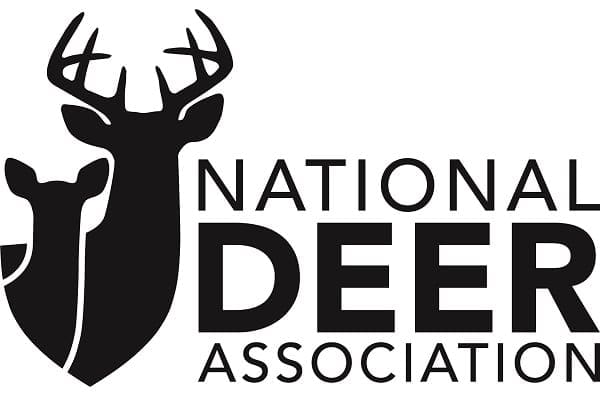National Deer Association in Partnership with the Outdoor Industry Communications Council

IS IT POSSIBLE TO AVOID CONFLICT AS WE CONSERVE RARE SPECIES?
Natural-resource management is as polarized as the rest of our politics. History proves it doesn’t have to be that way — Jimmy Bullock is a soft-spoken Southerner who seems more comfortable in a library or a classroom than the din and dust of a wood-pulp mill. But as one of the foremost forest ecologists in the United States, Bullock sometimes finds himself on the industrial end of the forest industry.
Mills, which convert felled timber to commercial paper products, are a reminder that many of America’s forests are working landscapes. That’s a difficult concept for some to accept, especially those who advocate for the preservation of our public forests, and who often use the absolutism of the Endangered Species Act (ESA) to stop all commercial activity on working lands.
If you’re an American forester, like Bullock, the words northern spotted owl can cause a facial tic. That’s because the small, nocturnal owl represents the stick of the ESA. Since the species was placed under federal protection, in June 1990, logging and forest activities have been severely curtailed across the Pacific Northwest, while efforts to recover populations of the owl have had only limited success.
While the spotted owl has become the poster child of the punitive side of the ESA, another species is worth our consideration. It’s the Louisiana black bear, a small swamp-dwelling ursine whose populations declined to the extent that it was listed as a species eligible for federal protection in June 1990, the very same month as the Pacific Northwest’s iconic owl was added to the endangered species list.
But while the spotted owl remains on the ESA, the Louisiana black bear was removed from the endangered-species list in 2015. The story of these two signal species in two of America’s iconic landscapes provides an example of two different approaches to species conservation, one that uses prohibitions to achieve its goals, and the other which uses collaboration, incentives, and voluntary compliance in order to achieve similar goals of species recovery.
STATUS OF SPOTTED OWLS AND LOUISIANA BEARS
The northern spotted owl remains listed as threatened across its range by the U.S. Fish & Wildlife Service. Since its listing in 1990, its core habitat of old-growth, uneven-aged, and late-successional forests have been protected from logging and other disturbances, prohibitions that have been blamed for the widespread collapse of the domestic logging industry across the rural Northwest. The spotted owl has become synonymous with conflict around both public- and private-land management, and has pitted loggers, ranchers, and developers against forest preservationists.
Meanwhile, new research indicates that invasive barred owls are displacing spotted owls, and federal agencies are investigating whether selective removal of barred owls can reverse spotted owl declines.
In the concurrent recovery story, when the Louisiana black bear was proposed to be listed, many private forestland owners in the South worried that the bear might become the “spotted owl of the South,” as Jimmy Bullock remembers, shutting down timber operations and curtailing forest management. Instead, the subsequent species recovery was defined by collaboration between private forest owners, federal agencies, timber industry and conservation organizations, and researchers.
Instead of stopping and closing activities on a wide swatch of Southern forestland, recovery focused on creating and conserving connected corridors linking occupied bear habitat. By the time the species was delisted in 2016, occupied bear habitat increased fivefold, viable populations increased from three to four, and estimates of individual bear numbers doubled, according to delisting documents. Meanwhile, the Southern timber industry continued to work, to employ workers, and to actively manage its forests.
Bullock, who was among dozens of stakeholders instrumental in recovery efforts, notes that a few operating principles applied to the practice of conservation without conflict.
First is a paradigm shift toward voluntary, collaborative conservation on working lands. Second, pursuit of measures that offer mutual gain across partners, and a preference for collaborative action prior to regulatory approaches. In the case of the ESA, collaborators noted areas where the act allows for flexibility, and then applied it. Crafters of this collaborative approach say that a broad range of groups with a demonstrated desire to achieve shared goals is critical to the success of collaborative conservation, and the application of data-driven solutions along with local and traditional knowledge can be both sustainable and scaled to the magnitude of the issue.
Lastly, practitioners of this brand of conservation aim to keep working lands working, in order to maximize long-term predictability, which is an important consideration not only for private businesses, but also for the sustainability of resource management.
Lessons learned from the Louisiana black bear conservation experience are now being applied to other species conservation strategies, ranging from coastal salmon restoration to reptile and amphibian recovery across the nation. In fact, Conservation without Conflict has become a recognized term throughout wildlife management circles, and has come to mean durable, sustainable solutions in which the process of conservation is nearly as important as the outcome.
About the Outdoor Industry Communication Council
Formed around the commitment to educate all Americans about the origins of conservation funding in America, the Outdoor Industry Communication Council is powered through a multi-state conservation grant and represented by companies, wildlife agencies, professional communicators, and conservation organizations. This project is funded by the Multistate Conservation Grant Program (F23AP00404), supported with funds from the Wildlife and Sport Fish Restoration Program and jointly managed by the Association of Fish and Wildlife Agencies and the U.S. Fish and Wildlife Service.
The post National Deer Association in Partnership with the Outdoor Industry Communications Council appeared first on HuntingLife.com.
